Syriac and Eastern Christianity
Tetraeuangelium Sanctum [Syriac Gospels, A Critical Edition]
ISBN: 1-931956-33-2
The standard critical edition of the Syriac Peshitta Gospels that satisfies requirements of scholarly research by its sound philological principles.
$144.00
Thebes [Modern Luxor]: Its Tombs and Their Tenants, Ancient & Present
Includes a record of Excavations in the Necropolis
ISBN: 1-931956-44-8
Rhind's book on Thebes is unique in that unlike many other Egyptologists of his time, he gives a precise and detailed description of how he excavated the sites, in itself an immense value to the history of archaeology.
$175.00
The Chronicle of Joshua the Stylite
Series: Kiraz Chronicles Archive 8
ISBN: 1-59333-014-6
This standard edition of the Chronicle, composed in AD 507, is considered one of the most valuable authorities for the period with which it deals. The manuscript from which the text is derived is a palimpsest copied between 907 and 944.
$133.00
Ancient Syriac Documents
ISBN: 9781463235598
Cureton’s book was first begun as early as 1848 on the basis of manuscripts in the collection of the British Museum. It furnished nineteenth-century students of Syriac Christianity with a wealth of new resources and continues to be just as valuable for students today.
$165.00
The Ancient Fathers on the Priesthood
On the Office and Work of the Priesthood in the Church of Christ
By Edward Male
ISBN: 1-59333-043-X
This book draws upon the works of numerous patristic authorities as well as Bernard of Clairvaux and Peter de Blois. Male synthesized their theological reflection and endeavored to present “the unanimous sentiments of the Church Catholic on its important subject.”
$76.00
Remnants of the Later Syriac Versions of the Bible
By John Gwynn
ISBN: 1-59333-175-4
In this two-part work, originally published in 1909, John Gwynn presented a small collection of New and Old Testament Syriac biblical texts, drawn from the Philoxenian and Syro-Hexaplar versions. Both parts are composed of Syriac and Greek texts and accompanied by Gwynn’s extensive notes.
$169.00
The Gospel of the Twelve Apostles With the Apocalypses of Each One of Them
Together with the Apocalypses of Each one of Them, ed. from the Syriac MS.
ISBN: 1-59333-008-1
Harris edits and translates into English an eighth-century Syriac version of the Gospel of the Twelve Apostles that belongs to a well-defined apocalyptic tradition.
$64.00
The Apocalypse of St. John
In a Syriac Version Hitherto Unknown
By John Gwynn
ISBN: 1-59333-174-6
Published in 1897, John Gwynn’s, The Apocalypse of St. John in a Syriac Version Hitherto Unknown, was the first Syriac book issued from the Dublin University Press. It is based on his study of a manuscript obtained on loan from the personal library of the Earl of Crawford.
$160.00
Dr. Grant and the Mountain Nestorians
ISBN: 1-59333-181-9
Drawing extensively from Dr. Grant's own letters and journals, Laurie's narrative provides a lively account of the life and work of a little-known nineteenth-century missionary.
$187.00
Legends of Eastern Saints
Chiefly from Eastern Sources
ISBN: 1-59333-243-2
In this GP edition, scholars and students will find Wensinck’s collection of texts from Ethiopic, Arabic, Syriac, and Karshuni manuscripts, as well as English translations of the legends of Archelides and Hilaria, assembled in one volume.
$179.00
The Bible in the Syriac Tradition (Syriac Version)
Translated from English into Syriac by Eugene Aydin
ISBN: 1-931956-15-4
This is an introduction, written in Syriac, to the Syriac versions of the Bible, with chapters on the manuscript tradition, the main editions, commentaries, and various aspects of the ways the Bible was interpreted and used in the Syriac literary and liturgical tradition. Originally written for a Syriac Studies course at the St Ephrem Ecumenical Research Institute (SEERI), in Kottayam, India, this new edition has been brought up to date and the bibliography expanded.
$70.00
Remains of a Very Ancient Recension of the Four Gospels in Syriac
ISBN: 1-59333-245-9
Working from a composite manuscript obtained in 1842 from the Syrian monastery of St. Mary Deipara, Cureton reconstructed the fragmentary remnants of what he identified as a fifth-century manuscript of the four canonical Gospels.
$115.00
The Four Gospels in Syriac, Transcribed from the Sinaitic Palimpsest
Transcribed by Robert Bensly, J. Rendel Harris, and F.C. Burkitt
ISBN: 1-59333-185-1
On Mount Sinai, Agnes Smith Lewis discovered the palimpsest manuscript that would be known as the Sinai Codex. The discovery was shared with Robert L. Bensly and F. Crawford Burkitt. The three of them worked on the manuscript, this work presenting the fruit of their labors.
$150.00
The Old Syriac Gospels of Evangelion Da-Mepharreshe
Being the text of the Sinai or Syro-Antiochene Palimpsest; including the latest additions and emendations, with variants of the Curetonian text, corroborations from many other mss, and a list of quotations from ancient authors
By Agnes Lewis
ISBN: 1-59333-134-7
This work was meant to supply a new edition of the Sinai Palimpsest text of the Old Syriac Gospels. Lewis's edition of the Syriac text, accompanied by an Introduction and extensive scholarly apparatus, is again made widely available in this Gorgias Press reprint.
$160.00
The Old Syriac Element in the Text of Codex Bezae
ISBN: 1-59333-166-5
An investigation into the character of the text contained in Codex Bezae and Codex Laudianus. The book is an independent contribution to the textual criticism of the New Testament. It reminds scholars not to neglect the Syriac perspective on textual problems and will remain useful by the materials it compiles.
$128.00
The Syro-Latin Text of the Gospels
ISBN: 1-59333-167-3
This sequel to The Old Syriac Element in the text of the Codex Bezae (also available from Gorgias Press), shows that assimilation to Old Syriac texts was a predominant factor in the formation of the Greek and Latin Western text.
$124.00
Palestinian Syriac Texts
From Palimpsest Fragments in the Taylor-Schechter Collection
By Agnes Lewis
ISBN: 1-59333-184-3
From the Ben Ezra Synagogue Genizah came thirty-two of the thirty-four palimpsest fragments that make up the material of this book. Originally published in 1900, Gorgias Press is pleased to present this reprint edition of Lewis and Gibson’s work.
$89.00
Clavis Syriaca: A Key to the Ancient Syriac Version Called “Peshitto” of the Four Holy Gospels
By H. Whish
Series: Gorgias Handbooks 3
ISBN: 1-59333-177-0
Clavis Syriaca furnishes a complete analysis of the text of the Gospels of the Peshitta New Testament and is an excellent study tool for students who wish to study it. The Clavis begins with the Gospel of St. John, as its language is the simplest, and ends with that of St. Luke. It is an indispensable tool for any student of the New Testament or the Syriac language. Words are analyzed according to text placement, translation, grammar, and Greek, Hebrew and Aramaic cognates.
$230.00
India and the Apostle Thomas
An inquiry with a critical analysis of the Acta Thomae
ISBN: 1-59333-180-0
Did St. Thomas visit India or is the story a legend? Medlycott provides the answer using archeological and patristic sources.
$170.00
Lectures on the History of the Eastern Church
ISBN: 1-59333-052-9
Twelve lectures on the branches of the Eastern Church, with an introduction on the province, the methods and the advantages of the study of Church History, by Arthur Stanley, Canon of Canterbury and Regius Prof. of Church History at Oxford (d. 1858).
$131.00
The Conversion of India
From Pantaenus to the Present Time (AD 193-1893)
By George Smith
ISBN: 1-59333-135-5
This book, based on six lectures by the author, gives the history of the conversion of India to Christianity from the earliest times until 1893. Smith’s work is useful for understanding the American missionary mentality of the nineteenth century.
$153.00
Eighteen Centuries of the Orthodox Greek Church
ISBN: 1-59333-051-0
Using the Seven Ecumenical Councils as backbone, Hore provides the reader with an overview of the Greek Orthodox Church. Writing in an era when the Oxford Movement was reaching a wide array of Anglicans with the forgotten connections with orthodoxy, Hore presents a sympathetic view of Byzantine Christianity. Following the trials and difficulties of the early church after it received imperial approval, a sketch of the Greek Church, including the "separatist" Churches, emerges.
$204.00
History of the Armenians in India
ISBN: 1-59333-049-9
The only history of its kind ever written, this book narrates the advent of the Armenian colony in India and its contribution to the East India Company. Seth describes in detail the Armenians’ commerce and power, as well as their literary and social activities.
$82.00
History of the Conquest of Egypt, North Africa and Spain
Also known as kitaab futuuh Miss by Bin 'Abd al Hakam
ISBN: 1-931956-73-1
History of Egypt from its legendary early beginnings until the seventh century, including the subsequent conquests of North Africa and Spain. Covers the judges of Egypt to 860, and a list of the companions of Mohammad and their Hadiths.
$139.00
Islam and the Oriental Churches: Their Historical Relations
Students' Lectures on Missions, Princeton Theological Seminary 1902-1903
By W. A. Shedd
ISBN: 1-931956-75-8
One of the first publications to tackle this subject, this book was widely read and used as a reference. The lectures cover the influence of Christianity on Islam, the relation of Christianity to Islamic theology, the expansion of Islam, the downfall of Christianity, and a look towards the future.
$63.00
Filter by
Filter by price
Filter by manufacturer


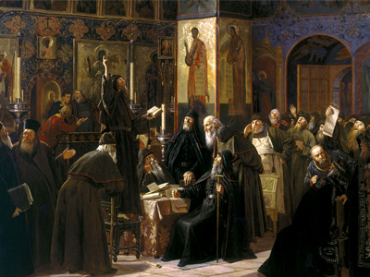
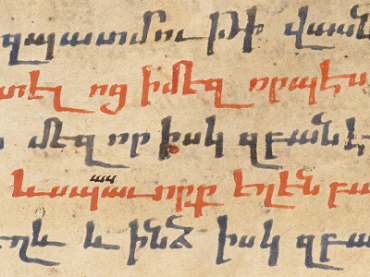
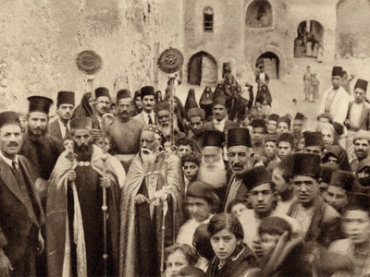
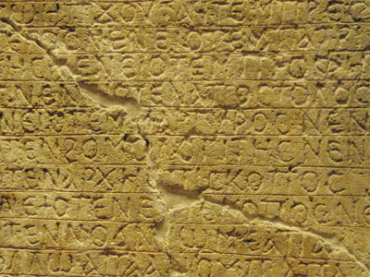
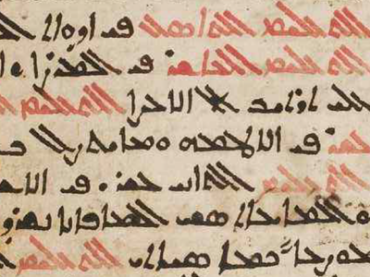
![Show details for Tetraeuangelium Sanctum [Syriac Gospels, A Critical Edition] Picture of Tetraeuangelium Sanctum [Syriac Gospels, A Critical Edition]](https://gorgiaspress450.forefrontinfotech.com/images/thumbs/0011671_tetraeuangelium-sanctum-syriac-gospels-a-critical-edition_360.png)
![Show details for Thebes [Modern Luxor]: Its Tombs and Their Tenants, Ancient & Present Picture of Thebes [Modern Luxor]: Its Tombs and Their Tenants, Ancient & Present](https://gorgiaspress450.forefrontinfotech.com/images/thumbs/0011681_360.png)






















